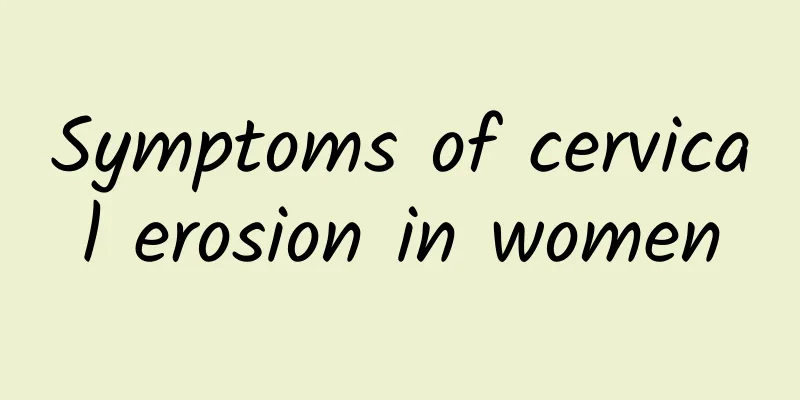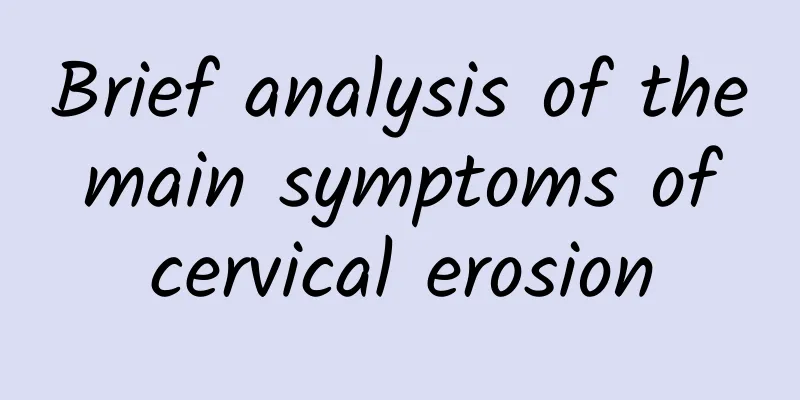Can I check for dysmenorrhea during menstruation?

|
Can I check for dysmenorrhea during menstruation? Dysmenorrhea during menstruation is the greatest torture for every woman. Don't ignore the existence of dysmenorrhea and mistakenly think that the pain will go away if you endure it. There are many reasons for dysmenorrhea, including organic lesions of the genitals. Therefore, once dysmenorrhea symptoms occur for a long time, you must actively check and treat it. So, can I check for dysmenorrhea during menstruation? Do not go to the hospital for examination during menstruation to avoid vaginal infection and complications of inflammation. It is best to check for dysmenorrhea 3-5 days after the menstruation is over. During menstruation, pay attention to rest and keep warm, avoid cold, do a good job of vaginal hygiene, avoid raw, cold, spicy and irritating food, and strengthen nutrition. There are many examination items for dysmenorrhea, mainly the following: Medical history: Detailed inquiries about menstrual history, including cycle, menstrual period, menstrual volume, and whether there is tissue discharge. This is essential for the examination of dysmenorrhea. Through inquiries, we can understand whether there are any triggers for pain, such as excessive tension. Anxiety, sadness, overwork or cold, etc., and the whole process of pain includes the timing, nature, degree and whether there is gradual aggravation of dysmenorrhea.Physical examination: Pay attention to the overall health, birth type, development and nutritional status. During the gynecological examination, pay attention to the size, position, texture and mobility of the uterus, whether there are protrusions or nodules, whether there are adhesions, thickening, nodules or lumps, tenderness, etc. of the uterine cuboid ligament and both sides of the uterus. Most patients can be diagnosed through medical history and gynecological examination. Pelvic ultrasound examination and hysterosalpingography: Patients with dysmenorrhea need to undergo pelvic ultrasound examination and hysterosalpingography, which can diagnose uterine fibroids, uterine adenomyoma, uterine malformation and ovarian tumors. Diagnostic curettage and pathological examination can exclude intrauterine blood and residual pregnancy products. Laparoscopy: Laparoscopy can diagnose endometriosis, find pelvic inflammatory masses and uterine malformations, uterine fibroids, uterine adenomyomas, and ovarian tumors. Hysteroscopy can detect small lesions, mucosal fibroids, polyps, and endometritis. When female friends experience dysmenorrhea during menstruation, they must go to the hospital for examination and treatment in time. Through the above examination methods, the cause of dysmenorrhea can be identified, and then targeted treatment can achieve ideal results. However, different hospitals have different examination and treatment methods. It is recommended that you choose a regular hospital for examination. |
<<: Can I get pregnant if I have vulvar leukoplakia?
>>: What should not be eaten after ectopic pregnancy
Recommend
What are the symptoms of chronic vaginitis?
What are the symptoms of chronic vaginitis? When ...
What causes cervical erosion?
Cervical erosion is very harmful to the health of...
What is the reason for two consecutive miscarriages? It may be caused by the following reasons
Spontaneous abortion is caused by poor physical c...
What fruits can I eat after abortion surgery? What is the best thing to eat on the day of abortion surgery?
After an abortion, you need to pay special attent...
Why is it painful to press an ovarian cyst?
Ovarian cysts are painful when pressed. This may ...
How harmful is cervical erosion?
Cervical erosion seriously endangers women's ...
Cysts after miscarriage: Is it normal or something to pay attention to?
🌸Miscarriage is a major challenge to a woman'...
What are the early symptoms of vulvar leukoplakia that you know?
What early symptoms of vulvar leukoplakia do you ...
Fatty liver is closely related to metabolic syndrome! Famous doctor: Losing 5% of body weight can reverse fatty liver
Fatty liver has become a national disease among m...
What does an egg-sized uterine fibroid look like? Is an egg-sized uterine fibroid serious?
What does an egg-sized uterine fibroid look like?...
Common symptoms of cervical hypertrophy
Cervical hypertrophy is common in life, and timel...
One month after abortion, the pregnancy test stick is one dark and one light
If the pregnancy test stick shows one dark and on...
Can’t get rid of lower body fat? Chinese medicine doctor Zhang Wenxin shares 3 secrets to create supermodel legs
Office workers often sit for long periods of time...
What is the cure rate of dysmenorrhea?
What is the cure rate of dysmenorrhea? Dysmenorrh...
Endometrial Thickness and Motility
In daily life, endometrial thickening has always ...









